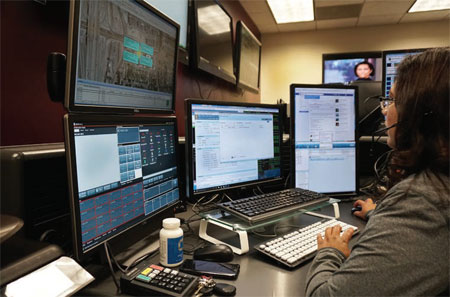By Brice Wallace
If an armed man or woman intent on inflicting harm enters a workplace or business, among the defenses available to those inside is being armed with information.
Knowing such basic things as all the possible exit routes, places to hide and even ways to hide can increase those people’s chances of survival, Christopher A. Knight said at the recent Employers Summit, an Employers Council event in Salt Lake City.{mprestriction ids="1,3"}
Knight, chief of program management and implementations at Priority Dispatch Corp. in Salt Lake City, said companies and organizations can better ensure the safety of their people with planning and preparation in the rare event of an active shooter or assailant situation.
“It’s really ratcheted up lately,” Knight said of such events. “I can tell you, law enforcement organizations are prepared for an active shooter situation, so if you can be prepared at your organization, it will really benefit you.”
Knight explained how companies can prepare before an event and how they can better help emergency 911 dispatchers with solid, accurate information during one. Knight briefed the audience about the mindset of a typical assailant, who sometimes is a co-worker who displays warning signs prior to taking a gun into the workplace. Those warning signs can include increasingly negative and/or pessimistic thinking; mentioning or admiring previous attacks; disruptive, unproductive and/or unsafe behaviors; and believing in conspiracy theories. A common red flag is the person feeling they are in a dead-end position at work, unlikely to get a promotion they believe they deserve.
And while assailant events often occur in response to a “trigger,” Knight cautioned that “people don’t just snap. They don’t wake up in the morning and say, ‘I’m going to be an active shooter at this particular location today.’ It doesn’t happen. It builds up. They plan it.”
Knight said that while active assailant incidents are “very, very, very infrequent,” employers and employees need to realize that statistics indicate that they are more likely to occur in a commercial setting than in schools. That is among many myths about such events, with others being that assailants are always young males with a gun.
Some more-tangible preparation focused on information is having workers know all of the entrances and exits at their workplace building. His company has 200 employees in a nine-story building and conducts annual active-assailant training.
“If you have an active shooter situation in your building, what if he or she is coming through the front door and up your main steps? Where are people going to go, right? And it’s way, way, way too late to try to figure out how to get out of the building if you don’t know that beforehand,” Knight said.
Workers also need to know the steps to take to increase their chances of survival during an event. They need to understand a “run, hide, fight” strategy and realize that “hiding in plain sight” is actually more dangerous than evacuating the building or “locking down” inside it by turning off lights, locking or barricading doors and staying out of the assailant’s line of sight.
“If that door is locked, they’re not going to stop and try to get the door open,” Knight said. “They’re going to move on to the next target.”
During an attack, employees also should try, even in the obviously intense situation, to remain calm and provide emergency 911 operators with as much relevant information as possible. Those operators are trained to gather information about the numbers and types of weapons, the type of body armor the assailant is wearing, the numbers and locations of victims/hostages, the type of vehicle used by the assailant, how many people are typically in the building, and which doors can be locked or typically are locked.
All of that information is helpful, Knight said, because responders have “no clue” about the building they will enter and the people inside it.
Preparing for assailant situations, having a lockdown and evacuation plan and training employees can save lives, Knight said, but he also noted a positive byproduct.
“We get so much good feedback on it,” he said of his company’s annual training. “Why is that? Because people know we’re taking care of them.”{/mprestriction}








